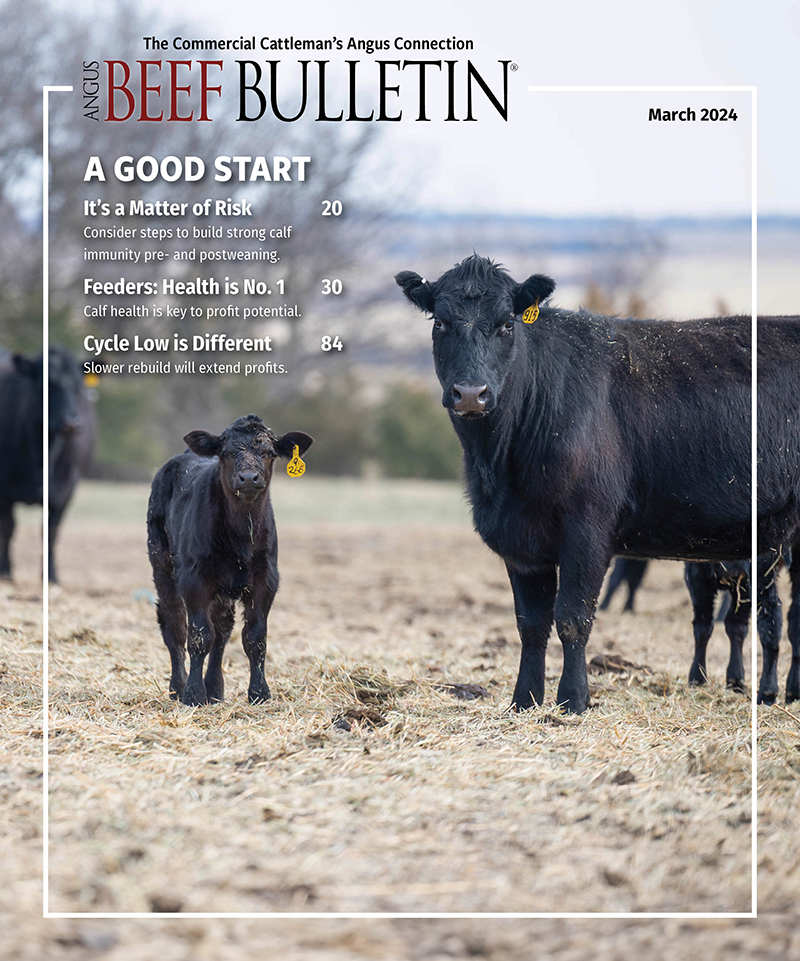
Suggestions for Summer Annuals in Fall and Winter Pasture
Keys to building a resilient and nutritious cover-crop mix.
Extending the grazing season can reduce production costs. Healthy permanent pastures are best, but sometimes producers can use annual crops to fill gaps or improve soil health before replanting a pasture.
“Every time you start a tractor, it costs more money than letting animals harvest their own feed,” says Kevin Elmy of Friendly Acres Farm in east-central Saskatchewan, Canada, who often consults producers regarding ways to improve pasture production. “It may pay to seed cool-season annuals in the spring that can be grazed later.”

Diversity is key to creating a cover crop that grows through the spring, summer and fall. [Photos by Kevin Elmy.] |
Some forages that were once considered “cover crops” (to keep the ground covered and prevent erosion and add fertility to soil between crops) are now planted for grazing.
The best balance in a cover crop — for grazing animals and future soil health — is a mix of grass, legume and broadleaf plants. Visualize this balance as a triangle, using these three plant groups, to determine how to mix these blends.
“A good cover crop contains all three. A great cover crop includes a warm-season grass, cool-season grass, warm-season legume, cool-season legume, warm-season broadleaf and cool-season broadleaf. Diversity is key,” says Elmy. This is the best diet for cattle; there is always something green, providing what they need, as well as feeding the soil biology.
If seeding early, while there is still a chance for frost, warm-season plants won’t do well, he cautions. Use cool-season plants such as oats, barley, peas, and maybe chicory or plantain to provide early grazing. The base of the triangle should be grasses, because they produce the most pounds per acre of forage.
“Legumes will be the ‘gas’ you add to the engine,” he says, explaining they provide good nutrient quality for the livestock and nitrogen-fixing for the soil.
At the top of the triangle are the broadleaf plants, like brassicas, because they are non-mycorrhizal. Mycorrhizal fungi form symbiotic relationships between the fungi in the soil and the plants. Fungi colonize the root system of a host plant, providing increased water and nutrient absorption capabilities, while the plant provides the fungus with carbohydrates formed from photosynthesis in a mutually beneficial relationship. Some plants, like brassicas, are highly resistant to mycorrhizal fungi and normally remain uncolonized by fungi, explains Elmy.
“There are also potential feed problems with brassicas, including the fact they are too high in protein. You only need a little bit of these in the mix to add diversity and protein,” he warns.
The sugar-to-protein balance is important. Keep the sugar-to-protein ratio in the rumen at least two-to-one, to help the rumen perform more efficiently, says Elmy.
We can actually get these levels as high as three-to-one, using some of the high-sugar forages, he adds. If needed, adjust the mix to have a few less brassicas and more grass, especially the energy-dense grasses.
“We are also finding, through research, that to feed the soil biology, we need to keep plants in a vegetative state (actively growing). Early in the year, cool-season grasses, broadleaf legumes, etc., are best. But as we get into summer and warmer nights, we can transition into warm-season species. Then later we can be switching back from warm-season to cool-season species,” he says.
Adding a winter cereal grain helps these species keep regrowing through the year and facilitates rotational grazing, notes Elmy. But before any seeds are planted, he asks producers to consider their goals for the pasture.
“Are you looking at rotational grazing, or taking a cut of hay and then grazing the regrowth? Your plan will determine the species for your cover-crop mix,” says Elmy.
Editor’s note: Heather Smith Thomas is a freelance writer and cattlewoman from Salmon, Idaho.



